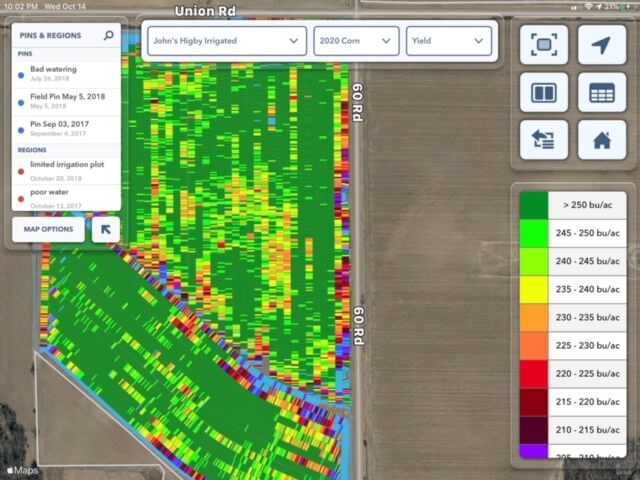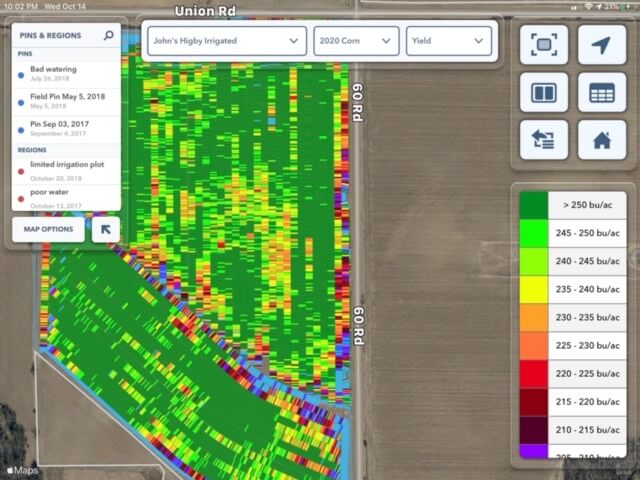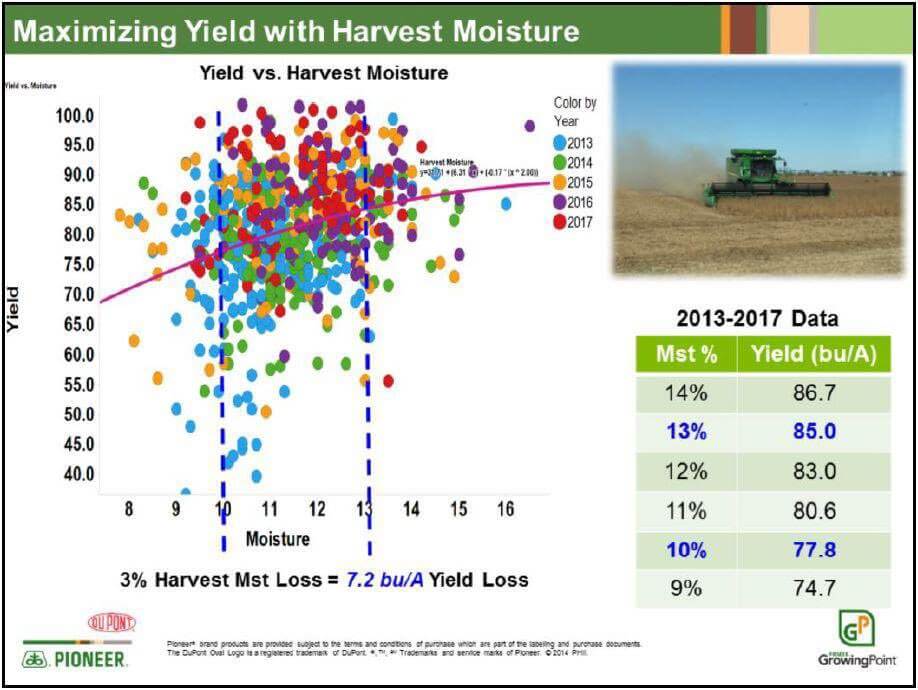Takeaways from 2020
Oct 15, 2020

Takeaways from 2020
By: Jeff Hammer
When you try to put into words what the last 7-9 months have been, the context of those words will never be able to be put into perspective by those who didn’t live it. What a wild ride it has been as we look to close the book on a year that most everyone will be glad to see in the rearview mirror. Lockdowns, Pandemics, Hurricanes, Floods, Droughts, Fires, and Politics are simply Daily headlines from the year 2020. Most of us will never want to look back on the past year, but as an agronomist staring at dirt…….I mean soil, all of the time I can’t wait to review what I’ve learned. So here are a few of my key takeaways from Notorious 2020.

I love looking back so we can look forward.I hope everyone had a successful 2020 and look forward to working with you in 2021.
By: Jeff Hammer
When you try to put into words what the last 7-9 months have been, the context of those words will never be able to be put into perspective by those who didn’t live it. What a wild ride it has been as we look to close the book on a year that most everyone will be glad to see in the rearview mirror. Lockdowns, Pandemics, Hurricanes, Floods, Droughts, Fires, and Politics are simply Daily headlines from the year 2020. Most of us will never want to look back on the past year, but as an agronomist staring at dirt…….I mean soil, all of the time I can’t wait to review what I’ve learned. So here are a few of my key takeaways from Notorious 2020.
- Maturity & Planting Date in soybeans mattered: When it doesn’t rain the entire month of August you would expect it to be damaging to potential soybean yields. Frankly, I was surprised at some of the yields we witnessed across the area considering the lack of rain. In most years we achieve higher yields with beans that are later in maturity due to the simple fact that they tend to be able to wait longer for a meaningful moisture event with minimal losses to yield from stress. 2020 proved again that the earlier maturity beans (late 2’s early 3’s) had enough moisture from July that was able to more impact grain fill than later maturing beans. To achieve maximum yields theoretically we should be planting the longest season beans in the arsenal first finishing with the shortest. However, this practice backfires when you talk about harvesting at ideal moisture levels to maximize yield which simply isn’t possible when you start with the longest and end with the shortest which leads me to observation #2

- Harvest Moisture Matters for both corn and beans……..a lot: I think one of the biggest hits to our later maturing soybeans this fall was harvest moisture. There were a lot of growers that somewhat had to wait around on maturity and then what happened? The beans went from 13 to 8 in a couple days. To the right is a chart that Dupont put out over 5 years of harvest data in soybeans at varying moisture levels. The losses are astonishing! Purdue released a study on corn that harvest losses could range from 0.6-1.5% per point on moisture! That means 180 bu corn that you didn’t harvest at 16% could drop in yield by nearly 11 bu/ac if you don’t get there until it is 12% moisture. I believe (and if you have been to our meetings you know I have touched on it) that grain harvest moisture is one of the more impactful things that can be managed. Planting and Harvest plans should always coincide with each other every year so growers can move from one variety or crop to the next when they need to be harvested. You can put this together regionally or by yield ability but when followed from spring planting to harvest you can have excellent results. This is one thing my dad and I strive for when we set down every winter. This past fall we harvested something for 29 straight days and covered 2000 acres of corn and beans in that span with most of the beans going out in the 12.5 moisture range, and corn in the 16’s. Some factors are out of your control in a dry weather fall like this one but management can still give you a better shot to haul the maximum amount of water allowed to the elevator which helps the bottom line. Fungicides can also be used to help manage harvest moisture with leads me to lesson #3.
- In a dry August fungicide on beans matters, and corn fungicide matters more on some hybrids than others: To most Agronomists my point about corn fungicide is kind of a “duh” statement but it really is true. I have several fields of data where we sprayed some real early, fields with different products at the right time, and some fields even sprayed 2X. But the one thing I do know is it did the job on the corn this year. I was convinced to try a new product 3 weeks before it was the right time to apply this year and that was our worst corn by 20 bu/ac. I sprayed 5 fields with test strips 28 days after the initial R1 application and could get a noticeable visual response, but not an economic one. I also thankfully had those haphazard checks that let you know your money was well spent. The picture on the right was from one of my irrigated fields and the strip on the far east side of the field could not be sprayed due to a giant power line that runs there. That yield difference happened to be 30 bu/ac so am I ever glad I didn’t hesitate on fungicide on corn this year. Soybean fungicide has always been a harder economic decision for me on dryland acres in north central Kansas. We always spray our irrigated beans because we are striving for ideal harvest moisture and high yields and that is where a response was big in 2020. I have polled a few growers and it seems there was a significant response this year and it makes sense. A pyraclostrobin containing product should help mitigate stress by regulating ethylene and boy did we have stress at grain fill. Couple this with the fact that roots under late season stress started to suffer from Charcoal Rot causing earlier than normal death and it makes sense. For me it hit home on our farm. We did not spray all of the dryland beans this year but one of the fields we did spray I had to pull out of one day because the beans were too wet. I went to a field 1.5 miles away planted the same day to the same variety with the same no till rotation on a similar soil type and they were 11 moisture and 13 bu/ac less! I know we will probably spray a few more dryland soybeans next year if we get some July rains.

I love looking back so we can look forward.I hope everyone had a successful 2020 and look forward to working with you in 2021.